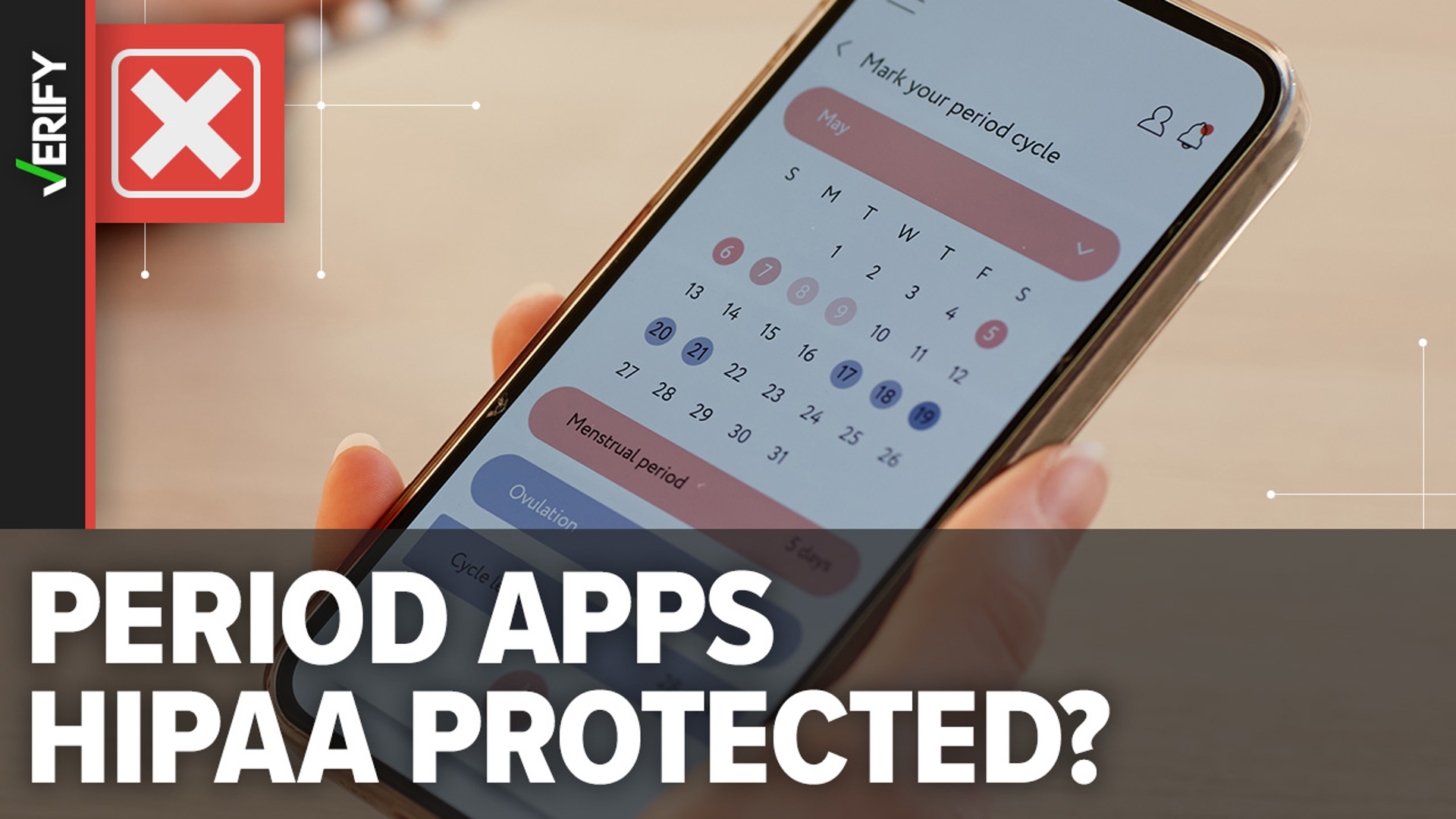PORTLAND, Ore. — Thousands of Americans have gotten the Pfizer-BioNTech vaccine this week, and millions are waiting in line.
But, a recent survey found that over one-quarter of the public remains vaccine hesitant, saying they "probably or definitely would not get a COVID-19 vaccine even if it were available for free and deemed safe by scientists."
These fears are largely fueled by a network of false narratives and misinformation about the vaccines.
So, KGW set out to VERIFY: What are these false narratives, and why are they wrong?
Here are five false narratives about the COVID-19 vaccines:
1. Conspiracy theories about the vaccine development process
One of the most common claims about the vaccines is that “they were developed too fast to be safe and effective.” This is false, since both the Pfizer-BioNTech and Moderna vaccines have around 95% efficacy.
This skepticism is grounded in the fact that vaccines typically take 10 to 15 years to develop. This is true, but with the coronavirus vaccine, a lot of factors fell into place to speed up the process.
Jonathan Berman, an assistant professor from New York Institute of Technology, said people should not be wary of the speed in which the vaccines were developed, but instead should see it as “one of the greatest scientific achievements in modern history.”
Federal and private companies invested billions of dollars in vaccine development to end the pandemic. Vaccine manufacturers simply did not face the same bureaucratic and financial barriers as they would in a non-pandemic scenario.
Additionally, scientists relied on already-developed scientific knowledge about mRNA and other coronaviruses. Researchers had already made key discoveries about other coronaviruses — SARS and MERS — before the pandemic even hit.
2. Myths about the vaccine not being necessary
Many conspiracy theorists claim that the vaccine isn’t necessary, stating that “a better way of fighting the virus is through natural immune responses.”
This is entirely incorrect since experts still do not know how long natural immunity lasts after recovering from the virus. Immunity varies from person to person, as an increasing number of people are getting the virus twice.
Without a vaccine, experts say it would take years for the U.S. population to gain herd immunity, where 70% of the population has antibodies against the virus. A September study estimated that less than 10% of Americans had antibodies against the virus at that time — about eight months since the onset of the pandemic.
Researchers predict that without a vaccine, the U.S. population would not reach herd immunity until March 2025. In less than a year of the pandemic, more than 300,000 Americans — from all age groups — have died. Hundreds of thousands more would die without a vaccine.
Other narratives lean on comparing death rates from the flu with those from COVID-19. This widely overstates death rates of the flu: according to the Centers for Disease Control and Prevention (CDC), 34,200 Americans died from influenza in the 2018-2019 season. Nearly 10 times as many Americans have died from COVID-19 this year.
False claims have also circulated about the effectiveness of hydroxychloroquine eliminating the need for the COVID-19 vaccine. In reality, there is little sign that hydroxychloroquine is effective for coronavirus patients, underscoring the need for the vaccine.
Some may say that because viruses mutate frequently, and the vaccine could become irrelevant. Luckily, scientists have found that the virus that causes COVID-19 mutates more slowly than a flu virus, which is good news for vaccine development.
Additionally, the virus has already gone through one major mutation that made it more contagious, but this also made it more vulnerable to vaccines, one researcher told NBC.
3. Unfounded claims about the risks of getting the vaccine
Many people falsely claim that “you can get COVID-19 from the vaccine.” In truth, it is impossible to get the virus from the vaccine.
Neither the Pfizer-BioNTech or Moderna vaccines use any live virus. They rely on mRNA, which is a small part of the genetic code of the virus, rather than any live part of it.
While the vaccines prevent a person from becoming sick, it is not unclear if they prevent transmission of the virus. This means if you are vaccinated but others around you are not, you can still transmit the virus to them if you catch it.
Other falsehoods revolve around the vaccine not being tested on enough people and unknowns about the long-term effects. Part of the reason why drug companies were able to develop the vaccine so fast was because of how many people enrolled in the trials.
Researchers were able to speed up the process by enrolling between 30,000 and 60,000 participants per study, while a normal vaccine study may have around 5,000 people, according to Dr. Joe Sullivan, a senior health advisor with the Oregon Health Authority.
And although scientists do not know the exact long-term effects of the vaccines, they can make some educated guesses based on past animal trials and data from the vaccine trials thus far, according to Berman from NYIT.
Experts say that for most vaccines, side effects are found within days or weeks. Pfizer-BioNTech and Moderna have reported no serious adverse effects like a heart attack or paralysis, though there are mild to modest side flu-like side effects like fatigue, pain at the injection site or muscle pain.
There are no scientific links between COVID-19 vaccines and infertility or miscarriage. Pregnant women have not yet been included in the vaccine trials, but we know that pregnant women who have had COVID-19 do not show increased risk of miscarriage, despite higher risk of hospitalization.
4. False narratives about pharmaceutical companies and public figures profiting from the vaccine
Many false claims associate the COVID-19 vaccines with “big pharma” corruption. On the contrary, leading vaccines are largely funded by governments and nonprofit organizations, which have pledged billions of dollars for doses at set prices.
For the near future, companies will be focused on fulfilling those orders quickly, rather than making large profits. It is unclear what the vaccine landscape will look like after this.
Other theories revolve around public figures like Bill Gates, falsely accusing him of wanting to microchip people with a vaccine. This theory arose when Gates said he foresees the use of “digital certificates” with health records — he was not referencing microchips or anything tied to the coronavirus vaccines.
There is no vaccine microchip, and the COVID-19 vaccines do not have the capability to track people or gather any of their personal information.
5. Baseless claims about the ingredients of the vaccine and mRNA
Many have claimed that “vaccines can alter your DNA.” This is false.
Both the Pfizer-BioNTech and Moderna vaccines are made of “messenger ribonucleic acid” (mRNA). This component never enters the nucleus of the cell, where the DNA is kept, so it does not have the capability to mutate the DNA in any way.
The mRNA merely gives the body instructions that trigger an immune response to the virus. Human cells break down and get rid of the mRNA as soon as they are finished using the instructions, according to the Mayo Clinic website.
“(The mRNA is) sort of like the instructions that come with Ikea furniture,” Berman, from NYIT, said. “You read it once, follow it and then you throw it away.”
Some people doubt the safety of mRNA since it has never been used in an authorized vaccine. But, scientists have been working to develop mRNA vaccines for over two decades. Human trials of cancer vaccines using the mRNA technology have taken place since 2011 and have shown promising early results, according to a European Commission science magazine.
Others have claimed that other ingredients in the vaccine are unsafe. Other than the mRNA, the leading vaccines are made of several lipids — which are fats that encase and protect the mRNA — along with salts and common sugar. The salts help with the acidity of the vaccine, and the sugar helps with the stability.
False claims have circulated about one of the lipids — polyethylene glycol (PEG) — and possible side effects. PEG is commonly used in drugs, cosmetic and food products. There have been some rare cases of this ingredient being tied to allergic reactions when products have a high concentration of it, but the Pfizer vaccine only contains a tiny amount of it.
Thus far, a few healthcare workers in the U.K. and U.S. have had anaphylactic reactions after getting the vaccine, and experts see PEG as a possible cause. Federal officials in the U.S. are only telling those with known allergies to an ingredient — like PEG — to not get the vaccine. The workers who had the reactions have since recovered, and thousands of vaccines have been given successfully.
Contrary to some claims, the vaccines are not contaminated with aluminum, mercury or formaldehyde. Assertions that claim these vaccines were developed using fetal tissue are also false.
MIT Technology Review breaks down the ingredients of the Pfizer-BioNTech vaccine here, and a medical student breaks down the Moderna vaccine ingredients here.
Do you have something you want us to VERIFY? Let us know. Email us at VERIFY@kgw.com.




